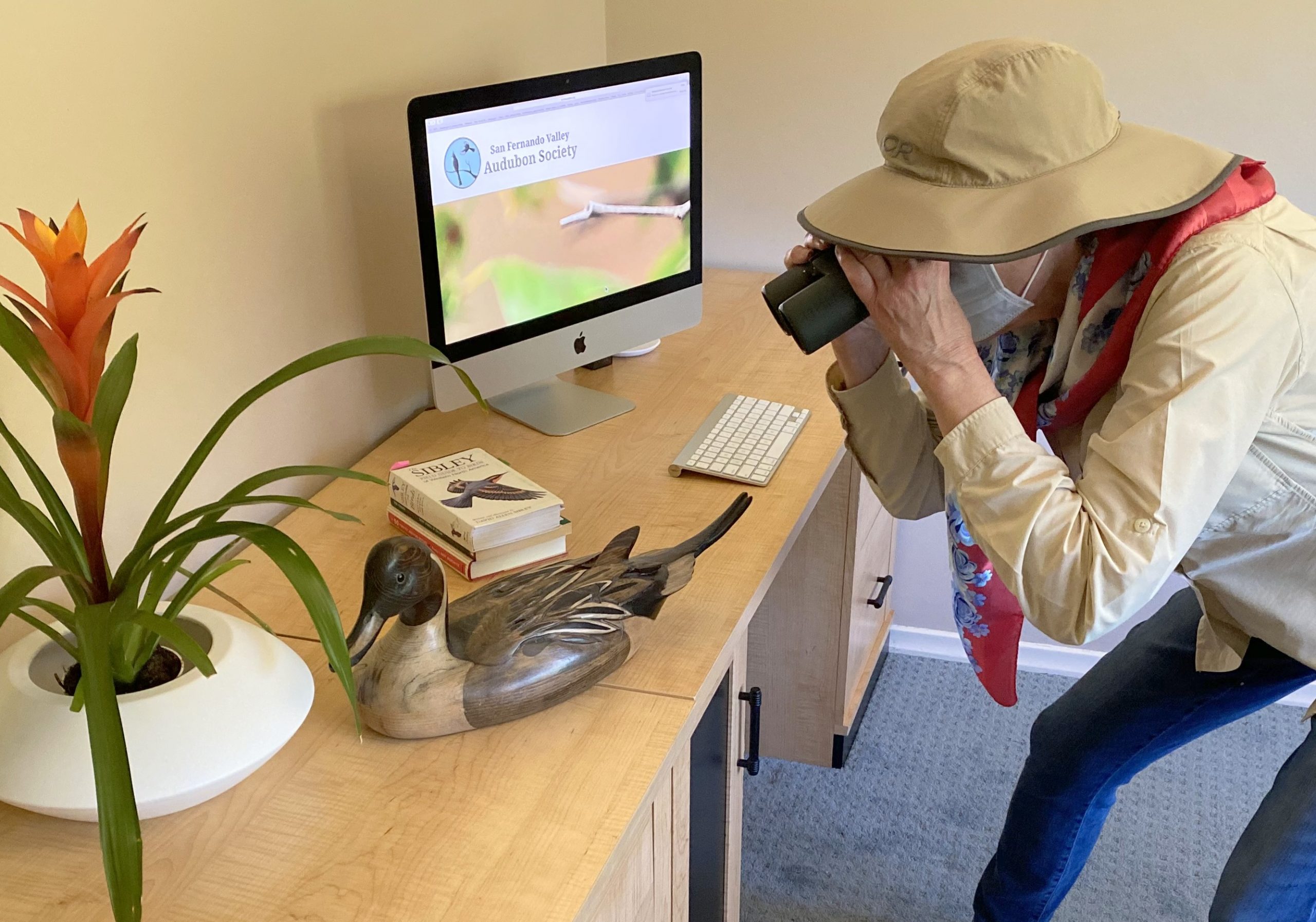No doubt many, if not most, of our members and friends are doing some birding – or a lot – while in forced domestication. After all, it is migration season.

Even though most of the choicest migrants are seen in parks and on hikes, nevertheless the observant back-yard birder will see an itinerant stranger from time to time. The Orioles and White-crowns, of course; the Ruby-crown; the Yellow-rump; the Hermit Thrush are likely, among others. When you see a Orange-crowned Warbler, you might think they’re year-round, but the individual you’re seeing now isn’t the same individual you saw early last Fall because their migratory range overlaps here in SoCal. And maybe it’s time to re-evaluate old friends – like the House Finch, Lesser Goldfinches, Allen’s and Anna’s Hummers, Bewick’s Wren, Spotted Towhee, Oak Titmouse and even the Mourning Dove – that we may have begun to take for granted. They’re all beautiful birds, each with its own personality. If you have any questions about who’s who, check out our Backyard Bird ID page, which also features some lesser-seen birds you might want to keep an eye out for, and access to information about bird feeding.

If your living quarters don’t sport a backyard, no reason to give up. A bird lured to a feeder can be worth two in the bush when you don’t have bushes. Hummingbird feeders are a clear choice; it’s getting late in the season for Oriole feeders, but some are still around. The perennial Nyjer-seed Goldfinch feeder makes very little mess and this year’s Lessers are in full appetite. Something as simple as a peanut-in-the-shell left sitting on a balcony rail or windowsill is almost guaranteed to attract someone.
If you worry about going to PetCo to stock up on seed (they are open from 10AM) there’s another source of high-quality products that does delivery, which you can discover by clicking here.
If you can, put something out for the omnivorous Crows. The lack of traffic has diminished the amount of squashed squirrels and such for them to dine on. They have newly-aviating young who are hungry, too.
If you see something unusual in your backyard, email us at birdidentify@sfvaudubon.org. If you can grab a picture, so much the better. When the doors open and the drawbridges go up, we’ll see who’s had the rarest visitor.
So difficult being pinned down at home. It does beat getting sick or dying, so we’re going to stick with it until the all-clear, right?
All the best from your local Audubon chapter.

Black Phoebe — Randy Ehler 
Red-tailed Hawk — James Kenney 
Dark-eyed Junco — James Kenney 
Ruby-Crowned Kinglet — Pat Bates 
Yellow Warbler — Gary Park 
WhiteCrowned Sparrow – David Barton


